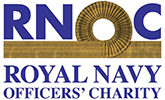Views from the Fleet Flagship 9
Posted on Thursday 30 September 2021
Presenting the 9th in our exclusive series, with a focus this week on Commander Edward Phillips.
Explain your role onboard
I am Commander Air, colloquially known as ‘Wings’, onboard HMS QUEEN ELIZABETH. My day to day role sees me supervising the conduct of aviation from the aircraft carrier and leading the ship’s Air Department of 120 people.
My career has been closely linked with the development of the Queen Elizabeth Class. I was one of the last pilots to be trained on the Sea Harrier, joining the front-line with when I was 24 years old, and embarked in our old Invincible Class carriers. Since then I have flown the Harrier GR7 and GR9, as well as the F/A-18 Super Hornet on exchange with the United States Navy. I was also a staff officer in the F-35 and carrier programme when the first steel was cut for HMS QUEEN ELIZABETH and have served on both the French and British Carrier Strike Group battle-staffs.
HMS QUEEN ELIZABETH is my sixth aircraft carrier, and it is a genuine honour to be at the forefront of her development from a trials ship to an operational, fighting aircraft carrier on the CSG21 deployment. Every day we confront new challenges simply because we are still treading new ground in our procedures and capability. This makes our work immensely rewarding because we know we have both the opportunity to set things the way we want them to be, but also a responsibility to get it right for those who will follow us in the years ahead.
What has the ship been up to in the past two weeks?
The last fortnight has seen the ship operating in the Pacific Ocean, crossing the Philippine Sea from the American island of Guam in the Marianas Islands to Okinawa in the Ryukyu chain, then through the East China Sea to work with the South Koreans in the Sea of Japan, before arriving in the port of Yokosuka off Tokyo Bay.
During this time the ship has routinely been operating her air group of F-35 jets and Merlin helicopters by day and night in weather fair and foul. The ability to fly at a scale and tempo not seen in the Royal Navy in several decades has been both exciting and immensely rewarding: the ship has more aircraft on board than any British ship since the early 1980s. This has enabled us to prove our renascent carrier strike capability and it is great to see the capacity and versatility of the ship and her aircraft being brought to life. We have a genuinely powerful and credible capability in our new carrier group, of which we can all be proud for decades to come.
It has also been a privilege to be sailing where the Royal Navy hasn’t sent a carrier since the late 1990s. We are in the very waters where the British Pacific Fleet saw so much action at the end of the Second World War and, whilst it is important to remember our links to past aircraft carrier exploits in this region, it is also exciting to think about how we are setting the conditions for a global carrier strike naval presence for the next 50 years.


